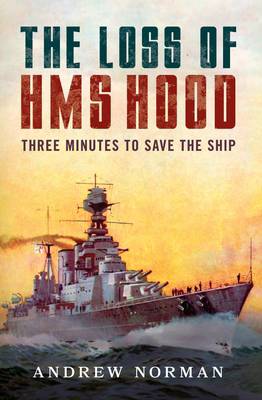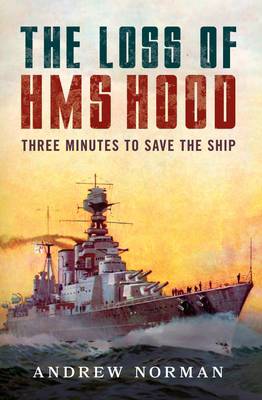
Je cadeautjes zeker op tijd in huis hebben voor de feestdagen? Kom langs in onze winkels en vind het perfecte geschenk!
- Afhalen na 1 uur in een winkel met voorraad
- Gratis thuislevering in België vanaf € 30
- Ruim aanbod met 7 miljoen producten
Je cadeautjes zeker op tijd in huis hebben voor de feestdagen? Kom langs in onze winkels en vind het perfecte geschenk!
- Afhalen na 1 uur in een winkel met voorraad
- Gratis thuislevering in België vanaf € 30
- Ruim aanbod met 7 miljoen producten
Zoeken
Omschrijving
In 1941, the battlecruiser HMS Hood - at 860 feet long, with a beam of 105 feet, a displacement of 48,360 tons (fully loaded), and a maximum speed of 32 knots - was Britain's largest and fastest warship.
And yet on 24 May, HMS Hood, the epitome of British naval power, with an armament which included eight 15-inch guns, was blown up a mere eight minutes after engaging the German battleship KMS Bismarck and her consort, the heavy cruiser KMS Prinz Eugen.
As HMS Hood sank into the icy depths of the Atlantic Ocean on 24 May 1941, she took with her the lives of 1,415 brave men - there were only 3 survivors - and a secret that has haunted the maritime world ever since. How could this possibly have happened? HMS Hood had seemed invincible, and the hopes of the British Navy in wartime had rested upon her great reputation. Her tragic demise was greeted with disbelief by the nation, and the shock waves reverberated all around the world.
Various theories have been put forward to account for her sinking, none of them entirely satisfactory. Here, these theories are reappraised in the light of the discovery of the wreckage of HMS Hood in 2001. Furthermore, a new and intriguing theory is proposed.
And yet on 24 May, HMS Hood, the epitome of British naval power, with an armament which included eight 15-inch guns, was blown up a mere eight minutes after engaging the German battleship KMS Bismarck and her consort, the heavy cruiser KMS Prinz Eugen.
As HMS Hood sank into the icy depths of the Atlantic Ocean on 24 May 1941, she took with her the lives of 1,415 brave men - there were only 3 survivors - and a secret that has haunted the maritime world ever since. How could this possibly have happened? HMS Hood had seemed invincible, and the hopes of the British Navy in wartime had rested upon her great reputation. Her tragic demise was greeted with disbelief by the nation, and the shock waves reverberated all around the world.
Various theories have been put forward to account for her sinking, none of them entirely satisfactory. Here, these theories are reappraised in the light of the discovery of the wreckage of HMS Hood in 2001. Furthermore, a new and intriguing theory is proposed.
Specificaties
Betrokkenen
- Auteur(s):
- Uitgeverij:
Inhoud
- Aantal bladzijden:
- 224
- Taal:
- Engels
Eigenschappen
- Productcode (EAN):
- 9781399036306
- Verschijningsdatum:
- 28/04/2026
- Uitvoering:
- Hardcover
- Formaat:
- Genaaid
- Afmetingen:
- 159 mm x 235 mm

Alleen bij Standaard Boekhandel
+ 61 punten op je klantenkaart van Standaard Boekhandel
Beoordelingen
We publiceren alleen reviews die voldoen aan de voorwaarden voor reviews. Bekijk onze voorwaarden voor reviews.









